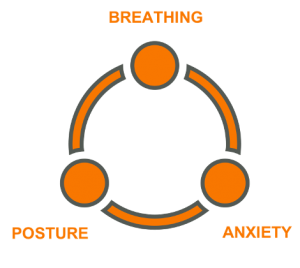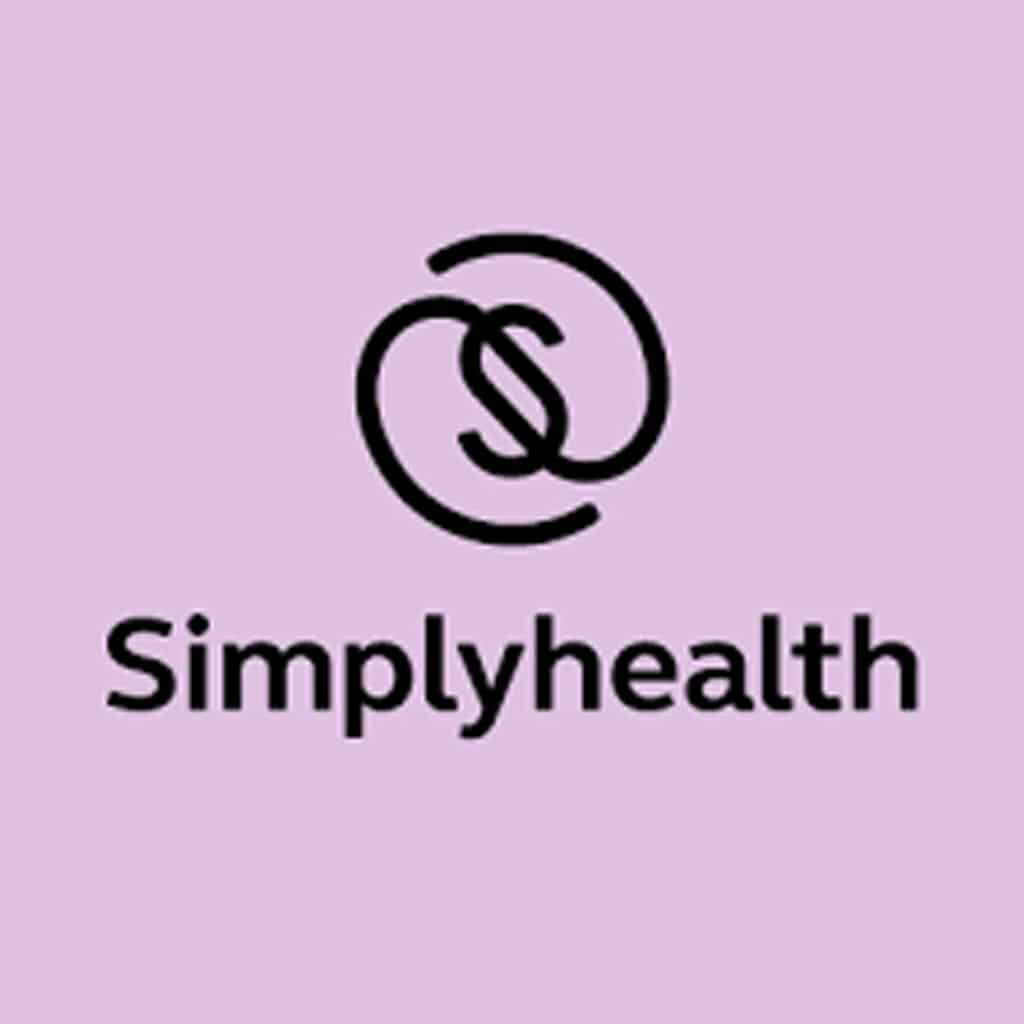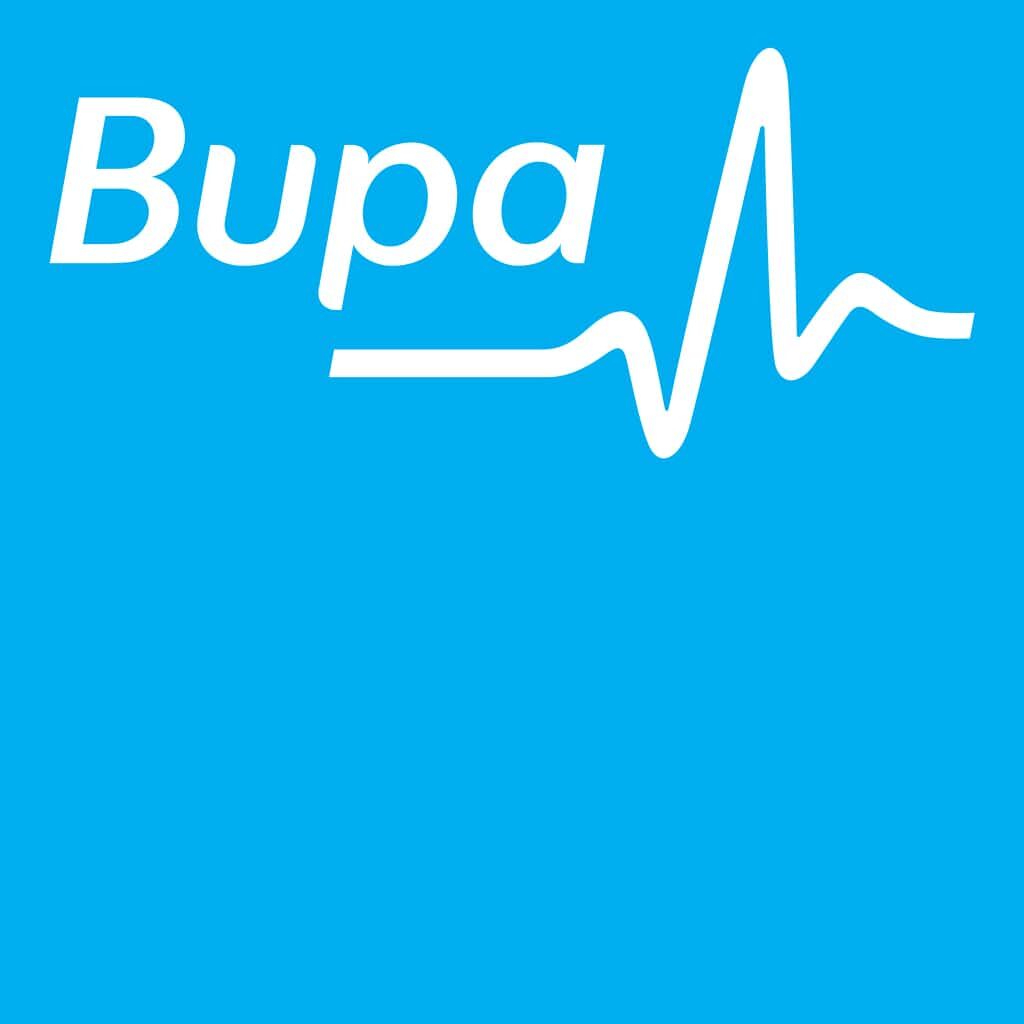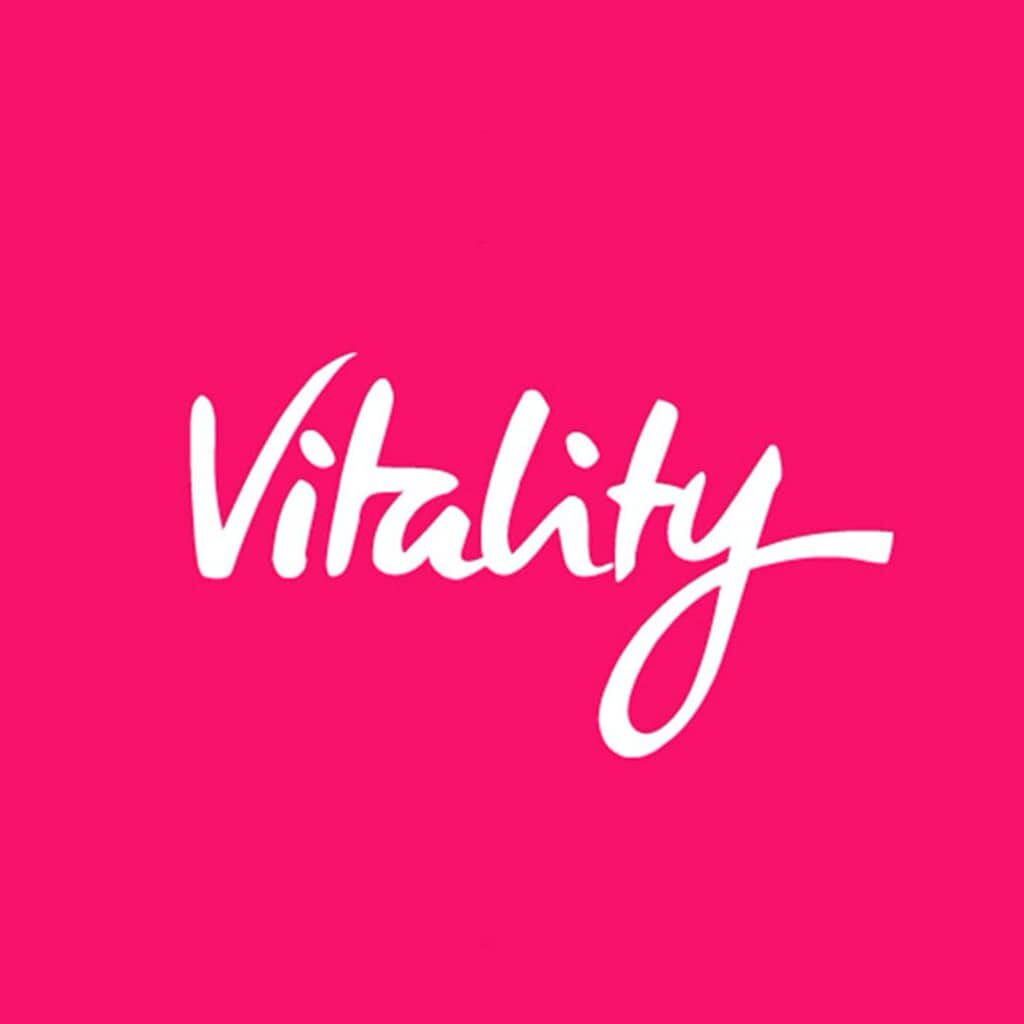I’ve always been fascinated by the relationship between breathing, posture and anxiety, a relationship that not many traditionally link together in everyday life. I wanted to cover this one with you, especially in such strange and uncertain times whilst I can’t treat you in person.
For those that are short on time, the main message here is that breathing, posture and anxiety are all connected having direct positive or negative effects on one another. Below is an explanation of the adverse effects that each element can have on the other two.
BREATHING – your body needs the right amount of oxygen to work at its best. Without sufficient oxygen, your muscles will reduce glucose into lactate and release hydrogen ions into the muscles leading to pain and possibly cramps. As this process takes place you will start to feel lower and a good posture will be harder to maintain.
Both Alkaline Breathing and Square (or box) breathing are two techniques that can be adopted to ensure that your feeding your body the right levels of oxygen and achieving the right acidity levels. Wim Hof ‘The Ice Man’ is one of the most famous practitioners of alkaline breathing. Square breathing is a simple method of regulating a consistent and steady breathing pattern and is also a fun activity to do with the kids!
POSTURE – if you adopt an incorrect posture, you not only physically restrict your lungs ability to fill and empty correctly, but you also restrict your automatic nervous system (ANS) which is responsible for regulating involuntary body functions including heartbeat, blood flow, digestion and you guessed it – breathing!
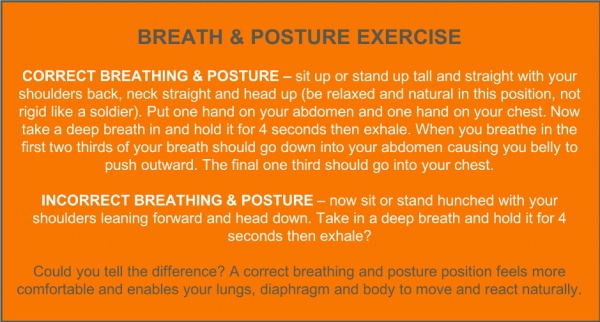
Typically, poor posture or slumped posture makes the shoulders turn inward and along with the head come forward. The turning in of the shoulders puts pressure on the clavicle(collar bone). The collar bone is a strut between the sternum and the shoulder. When your shoulders turn in it causes them to put pressure on the collar bone pushing them into your sternum. When this happens in both shoulders it pushes the chest downwards holding you in exhalation. If you have poor posture it makes it harder to get a full inhalation. The forward head round, shouldered posture puts increased strain on the neck and shoulder.
Overall, good posture creates the optimal body mechanics for optimal breathing and poor posture leads to inefficient or laboured breathing.
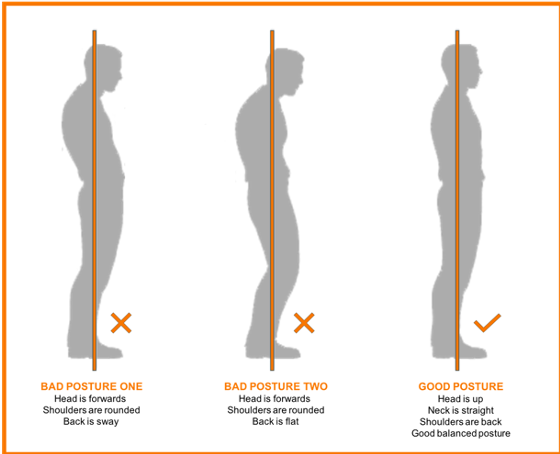
ANXIETY – the higher your levels of anxiety are, the more likely you are to adopt a bad posture and take shorter faster breathes. Firstly, it is has been observed that emotional tension frequently manifests itself in the
levator scapulae and upper trapezius muscles or as you may know them – the neck and shoulder muscles. This occurs via their neurological connection to the limbic system. The domino effect of this is bad posture and we’ve already covered what that means. Secondly, altered breathing patterns experienced by anxiety starts to create an oxygen imbalance within the body and, in worse case scenarios, can trigger a panic attack. It is incredibly important to develop coping techniques and structure to combat anxiety, now more so than ever!
ACTIVITES
So, what can you do to improve things? Firstly, if you want anything further explaining, please do not hesitate to contact me on gail@twyfordchiropractic.co.uk or call 01962 717817. If you’re interested in learning more, then I have added some links to various resources or additional reading.
Having said that, below are three things that I advise you to do to keep breathing, posture and anxiety in check.
- Planned meditation – plan in a reoccurring time of day to dedicate to meditation. This is to say at least 15 minutes every day to stop and reflect in a quiet room with no distractions. Practice breathing techniques in this time and make sure you leave your phone alone!
- Police your posture – become more aware of how you are sitting and standing in the day. It will take awareness and discipline to break any bad habits that have crept in. For more advice on posture techniques please don’t hesitate to get in touch.
- Breathe, breathe, breathe – I included so links to Wim Hof and square breathing earlier in this blog. Please take the time to watch them and try and be more aware of your breathing technique in the day. See correct breathing as import to your body as water on a daily basis.
RESOURCES AND ADDITIONAL READING
Decrease stress by using your breath. An article by Laura A. Peterson, R.N.
Box Breathing. An article by Ana Gotter (medically reviewed by Deborah Weatherspoon PhD, RN, CRNA
Kids Meditation – Square Breathing. Stop, Breathe & Think
Guided Win Hof Method Breathing. Wim Hof
What is the Automatic Nervous System?. An article by Kendra Cherry (medically reviewed by Claudia Chaves, MD)


